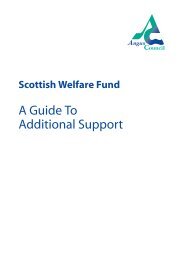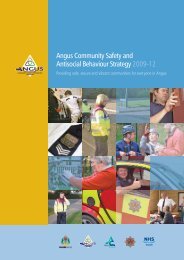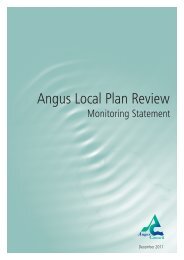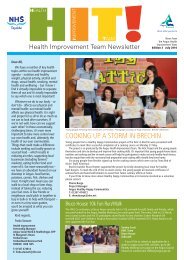Support Children and Young People at Risk of Self Harm and Suicide
Support Children and Young People at Risk of Self Harm and Suicide
Support Children and Young People at Risk of Self Harm and Suicide
Create successful ePaper yourself
Turn your PDF publications into a flip-book with our unique Google optimized e-Paper software.
Second, listen.<br />
Your core skills <strong>and</strong> values <strong>of</strong> emp<strong>at</strong>hy, underst<strong>and</strong>ing, non-judgmental<br />
listening <strong>and</strong> respect for individuals are all vital in this area<br />
Good practice in minimising self-harm <strong>and</strong> providing emp<strong>at</strong>hetic listening<br />
includes:<br />
❏ refraining from telling young person to stop, as this can make things worse;<br />
❏ explaining your role <strong>and</strong> the limits <strong>of</strong> your confidentiality;<br />
❏ giving inform<strong>at</strong>ion/educ<strong>at</strong>ion about self-harm <strong>and</strong> causes in a<br />
straightforward <strong>and</strong> m<strong>at</strong>ter <strong>of</strong> fact manner;<br />
❏ advising the child or young person about the range <strong>of</strong> available support;<br />
❏ involving young person actively in seeking help;<br />
❏ following procedures when responding to any injury;<br />
❏ addressing safety issues such as the risk <strong>of</strong> infection, nerve damage, illness<br />
such as HIV, AIDs, Hep<strong>at</strong>itis C or even risk <strong>of</strong> accidental de<strong>at</strong>h;<br />
❏ being aware th<strong>at</strong> the child or young person may be feeling guilty <strong>and</strong><br />
ashamed;<br />
❏ being aware <strong>of</strong> the stigma associ<strong>at</strong>ed with self-harm;<br />
❏ being non-judgmental;<br />
❏ tre<strong>at</strong>ing young person with respect;<br />
❏ listening emp<strong>at</strong>hetically with a view to joint problem solving;<br />
❏ providing reassurance th<strong>at</strong> problems can be solved;<br />
❏ checking for associ<strong>at</strong>ed problems such as bullying, bereavement, rel<strong>at</strong>ionship<br />
difficulties, abuse, <strong>and</strong> sexuality;<br />
❏ involving the child or young person in the assessment around risk <strong>of</strong> self-harm;<br />
❏ assessing if/how <strong>and</strong> when parents will be involved;<br />
❏ discussing if how <strong>and</strong> when parents would the risk around self-harm with the<br />
child or young person;<br />
❏ making appropri<strong>at</strong>e referrals if required;<br />
❏ taking seriously suicide gestures <strong>and</strong> thoughts.<br />
It is vital th<strong>at</strong> the young person retains some control <strong>of</strong> their situ<strong>at</strong>ion - is fully<br />
aware <strong>of</strong> who needs to be informed <strong>and</strong> why, is consulted on their views, is<br />
allowed wherever possible to set the pace <strong>and</strong> make choices. To do otherwise<br />
could result in a worsening <strong>of</strong> the self-harm.<br />
Remember th<strong>at</strong> self-harm is <strong>of</strong>ten a way <strong>of</strong> coping, so stopping the self-harm is<br />
not always the best thing to aim for immedi<strong>at</strong>ely. Safety <strong>and</strong> underst<strong>and</strong>ing are<br />
more important in the short term. There is no quick fix.<br />
12

















